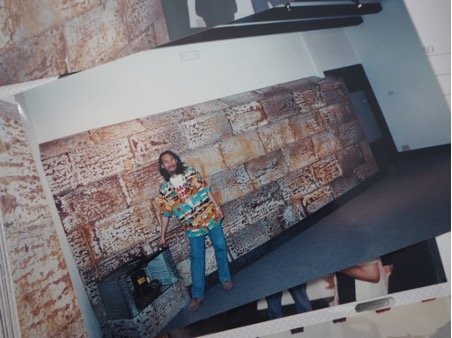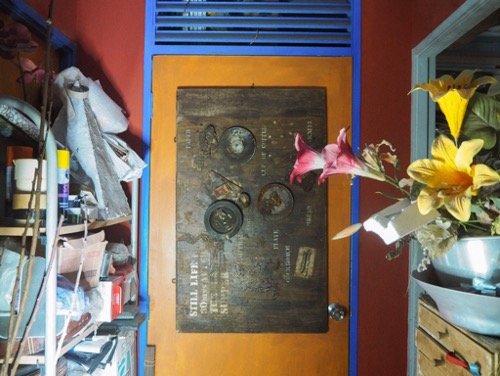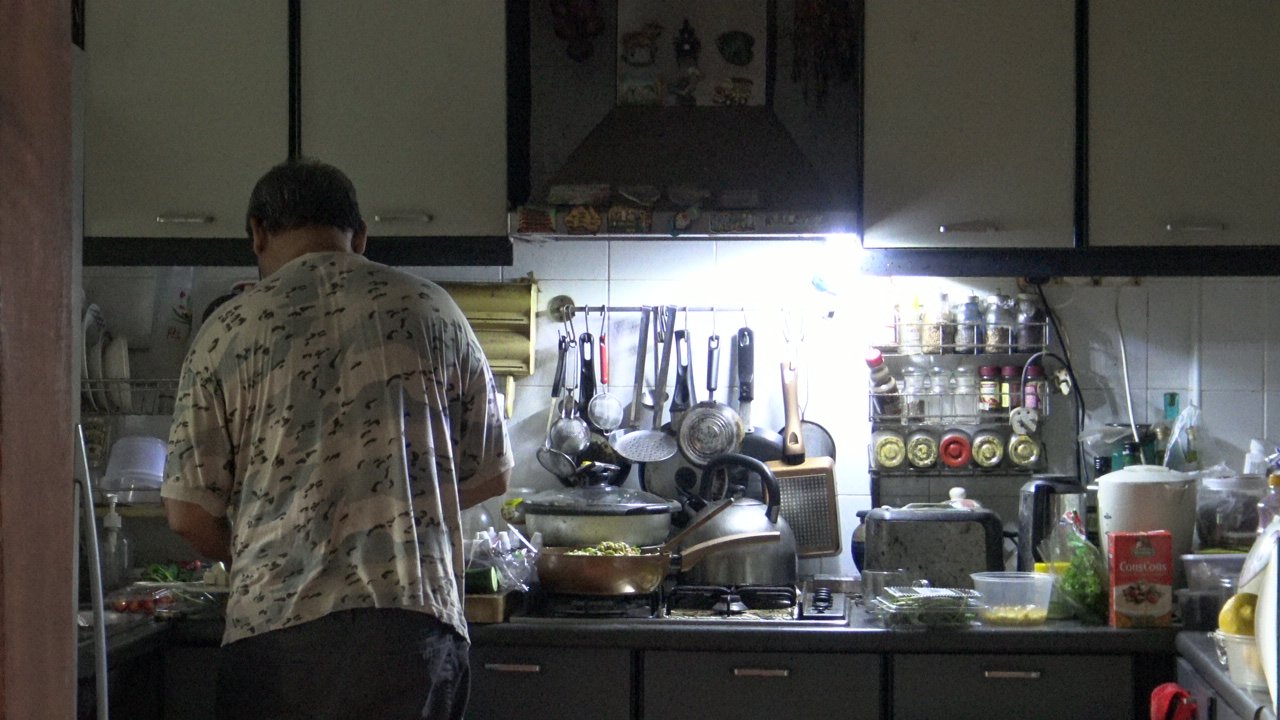
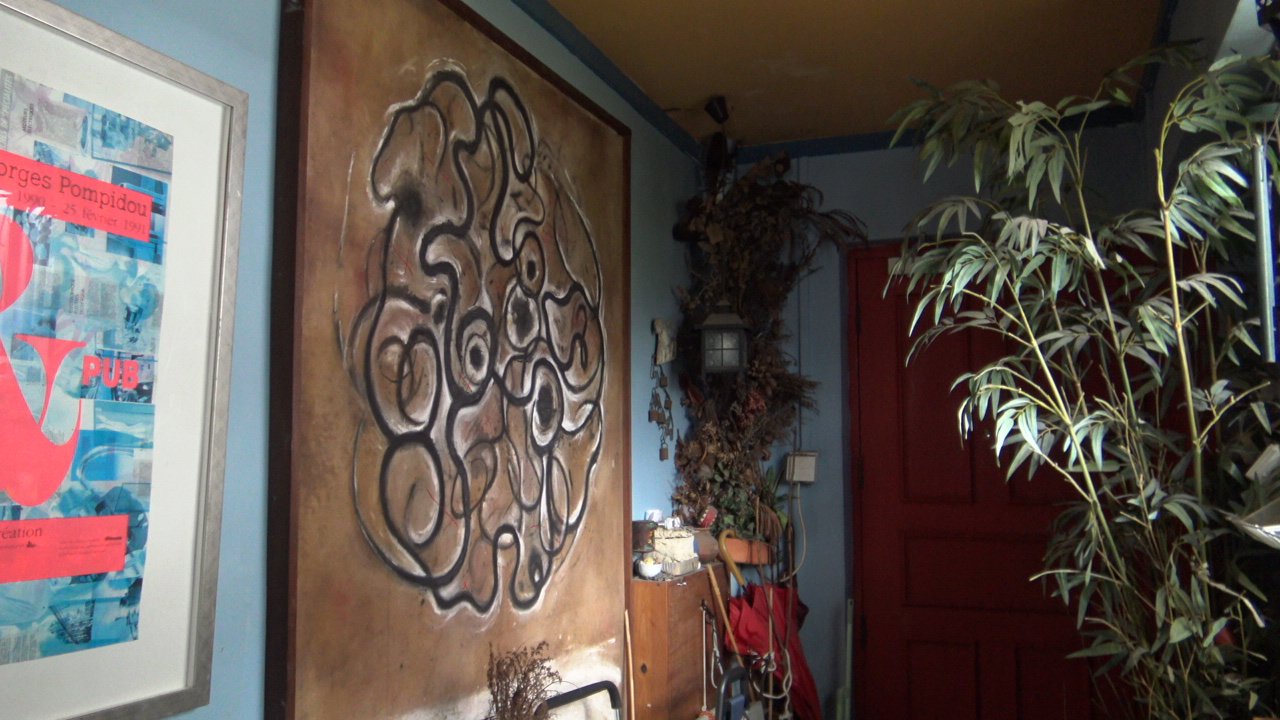
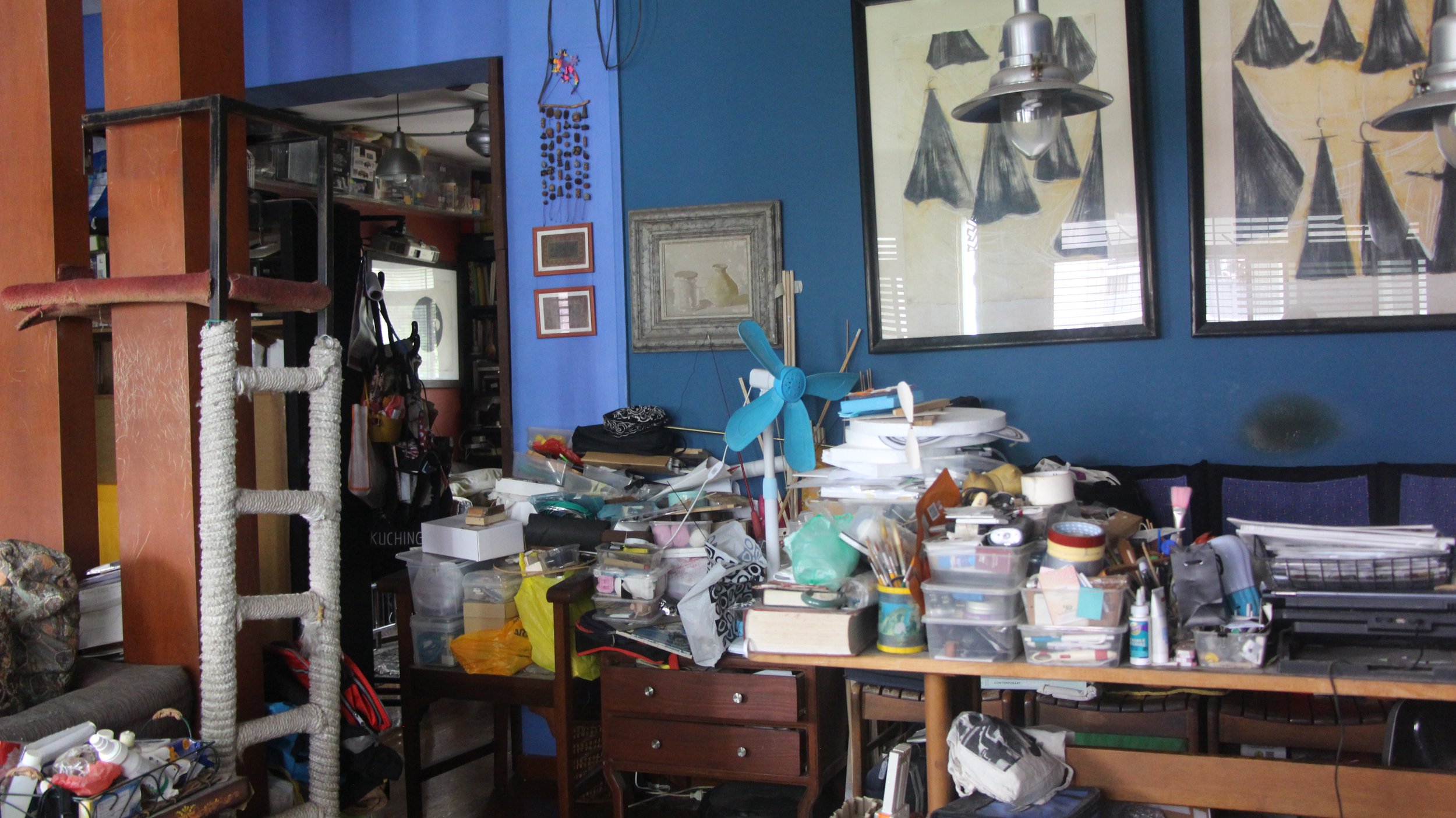
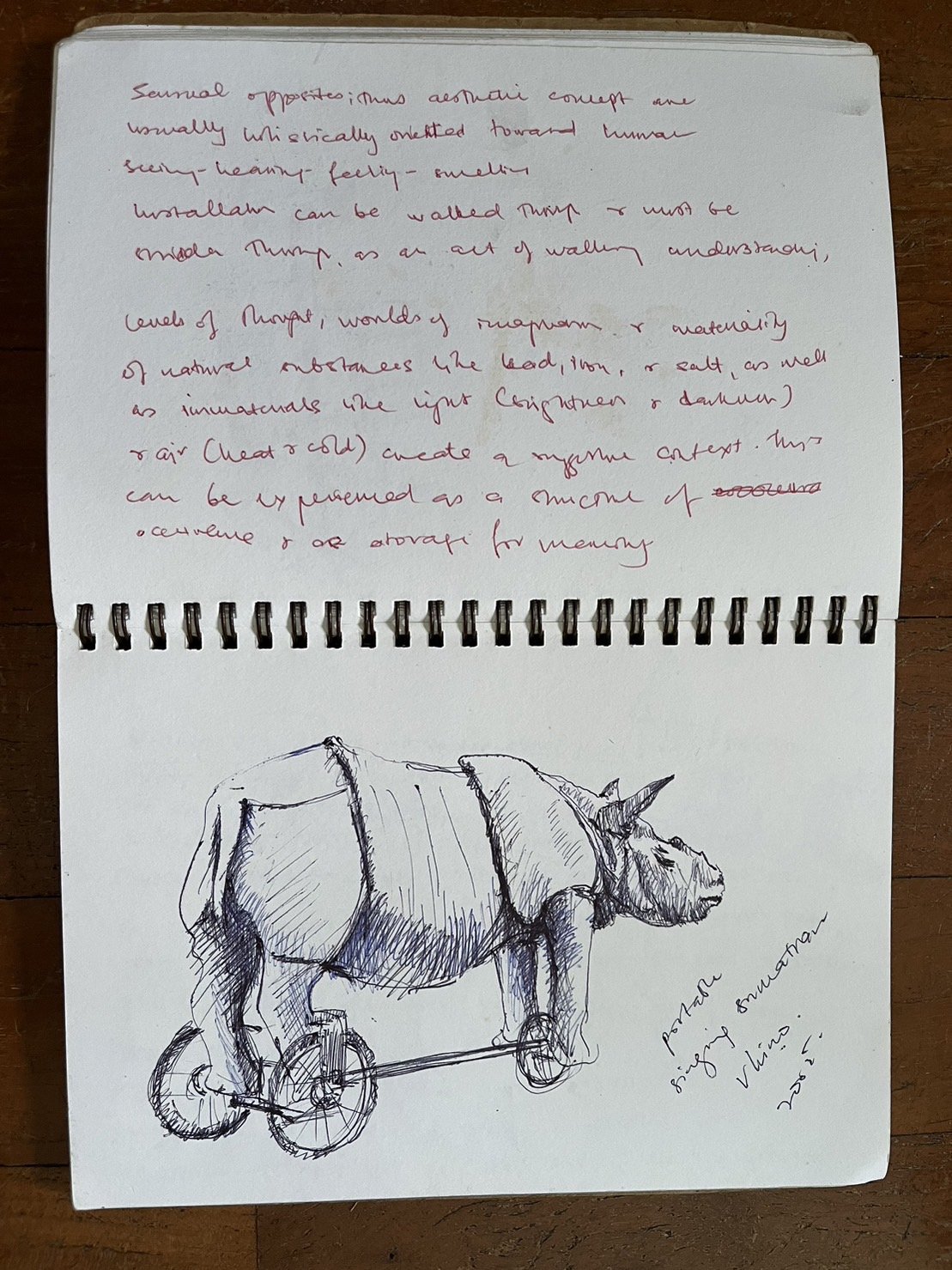
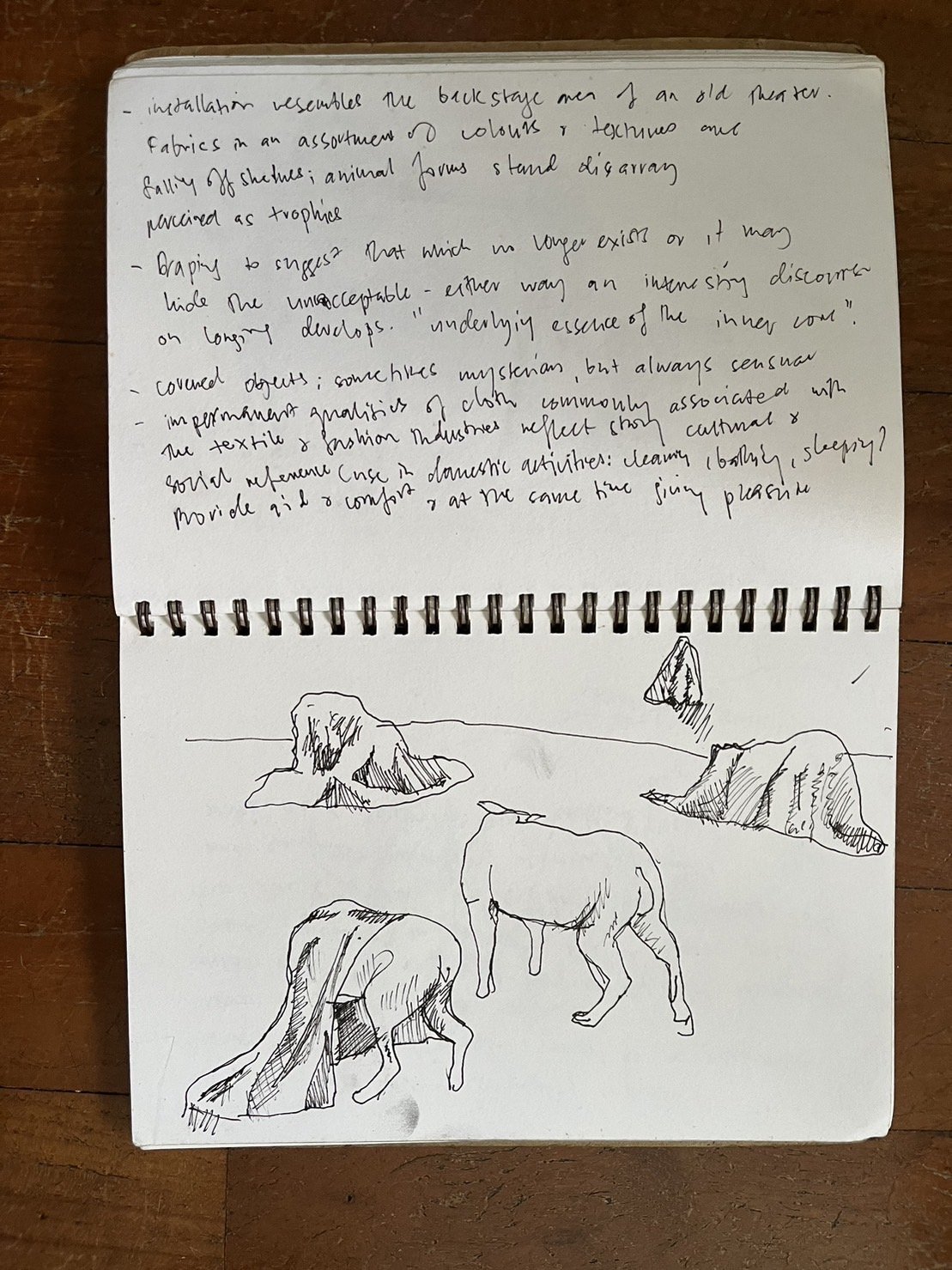
ARTIST PROFILE
Salleh Japar (b. 1962) is a visual artist, educator, curator, traveller, and a loving and inspirational mentor to many.
Salleh Japar is one of the pioneer contemporary artists of Singapore. He received his education at the Nanyang Academy of Fine Arts, graduating with a diploma in Fine Arts in 1985. He went on to obtain his Bachelor of Fine Arts from Curtin University of Technology in Western Australia in 1989, and graduated with distinction the following year. Salleh then proceeded to become an adjunct lecturer at the Nanyang Academy of Fine Arts until 1993, where he taught art history. Salleh’s education journey did not just end there, he went on to University of Central England, United Kingdom and pursued a Postgraduate Diploma in Art Education. As well as, venturing to Australia, Royal Melbourne Institute of Technology University to obtain his Masters of Arts. Salleh was also an active volunteer art tutor at the Handicaps Welfare Association. In addition to that, he was an assistant Curator of Art at the National Museum of Singapore (prior to the Singapore Art Museum), back when it was the only public art gallery/museum in Singapore. Salleh was the programme leader for the diploma and undergraduate studies from 1997 to 2014 at LASALLE College of the Arts. He is currently a senior lecturer in the Diploma in Fine Arts programme.
Salleh’s practice spans across various mediums and disciplines extending beyond paintings, including sculptures and installations. In 1996, Salleh obtained the Visual Art Award from the Japanese Chamber of Commerce and Industry, as well as, the Singapore Youth Award (Art and Culture) from the National Art Council. In 2001, Salleh represented Singapore in its first Pavilion at the 49th Venice Biennale (2001), with his work titled Kemelut (Turbulence). Salleh has also travelled across the world conducting several workshops and travelling exhibitions. He co-curated and exhibited the Wahana Collective Series at Balai Seni Lukis Negara, Kuala Lumpur, Malaysia (2003); Vargas Museum, University of Philippines @Diliman, Quezon City, Philippines (2005); and Selasar Sunaryo Art Space, Bandung, Indonesia (2005). He also conducted workshops & Art Residencies such as Victorian Tapestry Workshop, Melbourne, Australia (1999); Kong Ju, South Korea (1999); Yokohama, Japan (2000); Lalit Kala, New Delhi, India (2000); and Quebec, Montreal, Canada (2001).
Salleh draws inspiration for his art from his cultural background as a Malay Muslim. His works, however, are not only limited to his personal practising belief as it transcends and reflects the beliefs and teachings of various religions such as Taoism, Hinduism, and Buddhism. Salleh is interested in the universal elements and themes that are common across different cultures and religions. Influenced by Islamic school of thoughts, Salleh perceives nature as a site filled with symbolic meanings where he often draws inspiration from.
Salleh is known for many things, one of them being his involvement in the trio Trimurti along with artist Goh Ee Choo and S. Chandrasekaran. The trio were known for their notorious curatorial methods and art practice.
Salleh Japar is a household name in the Singaporean art space and will continue to be so. His practice precedes him as he continues to light the sparks of passion in many young artists beginning their journeys.
CONTRIBUTORS
- Isabelle Lim Ruixin
- Kenenza Michiko Hasan
- Nur Alya Binte Rahmat
- Ramos Charlene Andrea Ruaro
- Sarita Maria Abeyesundere
- Wan Oi Yin Nurul Hakimah
Super Cool Grandpa: The Multitudes of Salleh Japar
Introduction
Salleh Japar, a beloved household name, is one that has lived many lives in a single lifetime. He plays the role of artist—the role by which many recognize him—but he has also held the role of student, curator, educator, and loving father to his two cats. He is also known as a Super Cool Grandpa, an endearing title bestowed upon him by his students. At the time we met Salleh Japar, he was at the far end of his journey as an arts practitioner and educator, en route to ‘retirement’.
His journey began at the Nanyang Academy of Fine Arts (NAFA) in Singapore as a passionate and fiery youth. Amongst a few, he stood out as strong willed, not one to easily back down. He was unafraid to be critical of the arts institution and curriculum. Still life painting sessions were one such instance, evolving into a key subject matter characterised by monotony and non-negotiable repetition. Instead of painting all the apples strewn on the floor, he would deliberately paint only a few. “If one apple can be painted skilfully, you can paint 100 or even 1000s of apples,” said one of his peers, a sentiment Salleh strongly shared. This act of rebellion, though may seem minute, was still indeed an act of bravery, depicting the courage and criticality the older generation students of the art education system in Singapore had.
Upon boycotting his own graduation show at NAFA, a non-commercial exhibition titled Quintet was organised at Arbour Fine Art with a few from the cohort, two of which would be Salleh’s future collaborators, Goh Ee Choo and S. Chandrasekaran. This exhibition was, “arguably the most significant art exhibition in the second half of the 1980’s,” says art historian Jeffrey Say. A year after the Quintet exhibition, Salleh along with Goh and Chandrasekaran staged an exhibition at the Goethe-Institute, titled Trimurti.
Exposition pamphlet for Trimurti, at the Goethe Institute, March 1988. Depicted in the image are [from left] Goh Ee Choo, S. Chandrasekaran and Salleh Japar. [Photo by Alya.]
“Trimurti is a Sanskrit word describing three forms usually associated with the Hindu Godhead of Brahma, Vishnu and Shiva.
Here, we use it to define a manifestation of three forces, similar to nature - Creation, Preservation and Destruction.”
Each of these roles were undertaken by Salleh (Creation), Goh (Preservation) and Chandrasekaran (Destruction) respectively. Each form exists in co-existence and in exchange with one another just as envisioned for the exhibition with its dynamism and total happening of paintings, sculptures, installations and performances as a whole. Trimurti captures the beginning and the end, looking at the concept of total art and the duration of the exhibition in its entirety, encapsulating everything in a complete cycle. The closure of the exhibition is just as important as the opening. The end informs the beginning, and the beginning welcomes the end.
Mr Salleh photographed with his work titled Kemelut (Turbulence), at the Venice Biennale, Italy. Photo by [Us].
Another important aspect of Salleh's practice was travel. Travelling was driven primarily by his artistic endeavours. One example would be his travel to Venice, Italy. Salleh was selected to represent Singapore in its first participation in the prestigious Venice Biennale in the year 2001, alongside artists Suzann Victor, Henri Chen KeZhan, and Matthew Ngui. Salleh exhibited his work, Kemelut (Turbulence), at Schola di Santa Apollonia, Italy. His ventures to Kota Tinggi, Johor, Tanjong Penyengat, Bintan – Indonesia and Sri Menanti, Negeri Sembilan for the Gurindam dan Igauan project were some of his research motivated travels.
[Of Triumphs and Rejections -] The Flying Kiswah
From his plethora of projects, we were drawn to Salleh’s sketches of The Flying Kiswah, a short-lived project that was not fully realised beyond the extensive sketches and maquettes Salleh had created. Kiswah refers to the black cloth that is used to drape over the Kaabah, a sacred cube-like stone building in the centre of Makkah, which is considered to be the physical centre of Islam. In Salleh’s project proposal, the initial idea was to have a long black cloth, resembling the kiswah, draping around and through the mosque. Masjid Darul Aman was chosen specifically for its very strong Malay influenced architecture. The design of the masjid combines Malay architecture and Islamic art seen in the squarish minaret and the early pitched-roof structure commonly found in the Malay archipelago.
With the Flying Kiswah, Salleh was strongly moved by the need to bridge the art and public. As the fabrics manoeuvres through and around the masjid, Salleh hoped to engage the community and the congregation in a conversation of reimagining the masjid as a space beyond a site of worship. Unfortunately, the Flying Kiswah never got to bask in its entirety as its proposal was not fully met for a multitude of reasons. One being that, the concept of reimagining the masjid as a space was deemed too radical for the community at that time.
Salleh’s bid at intervention seems too entangled with prior expectations and connotations tied to the masjid, kiswah and the community that comes along with it. It seems that the community at that time was not ready to be provoked with the project. The Flying Kiswah defies preconceived ideas and expectations of a place of worship and upends the assumption that a masjid is only a place for prayer.
Photographs of the maquette of the Flying Kiswah. Photo by Sarita.
Sketches and annotations of the Flying Kiswah. Photo by Alya.
No doubt, it was a bold and brave statement from Salleh, it is a shame that we did not get to see this work come into fruition. In hindsight, we may perhaps ponder how the current community might perceive and engage with the work. Nonetheless, may this be a great reminder that even great artists face rejections.
Rebellion - What does it mean to Create Dangerously?
Salleh's unwavering spirit and criticality is evident throughout his journey from student to practising artist. As a student he got tired of the dull and monotonous still life painting classes. Instead of painting the still life objects as tasked, Salleh went on to create a multi-media assemblage by attaching saucers, an egg, a letter, a matchbox and an ash tray onto a wooden frame in protest.
He remarked, “You want still life, right? Nothing can be more real than the real thing.”
“STILL LIFE. 30 MINS AFTER THE LAST SUPPER.”
Still life made during Salleh’s time in NAFA, now hanging on the store room door in Salleh’s home studio. Photo by Alya.
Close up of the still life assemblage. Photo by Alya.
The aforementioned Quintet exhibition signified a great defiance against the arts curriculum. It differed greatly in philosophical, conceptual, personal and financial aspects to the NAFA graduation show. Quintet acted as a stepping stone upon which Salleh and his peers made their breakthrough into the local art scene. It was also around this time when the Trimurti collective was born.
His days of youthful rebellion in NAFA to the boycotted graduation show showcases Salleh’s outright nature and beliefs. It continued in his personal life and in his practice, the significance of probing, deconstructing and identity taking centre stage. The ‘Gurindam dan Igauan’ project included field trips to Pulau Penyengat, Bintan, Indonesia as well as Kota Tinggi, Johor Lama & Sri Menanti, Negeri Sembilan. The project sought to disrupt the idea that Southeast Asian art is not entirely influenced by Western art. However, the lasting impression of colonial past still remains on South East Asia. Despite this, Salleh focuses on the unique and independent elements of Southeast Asian identity. The Gurindam project was held at the Earl Lu Gallery at Lasalle College of the Arts in 2004. The stunning installations in conversation with each other leads the viewers to unpack cultural identities and the effects of the past. The work is made up of found and synthetic materials such as aluminium columns, parchment, cloth, brass, salt, and more. In the essay by Venka Purushothaman, he describes one of the installations featuring six revolving aluminium columns. The columns are adorned with scribbles framing the exhibition space. He connects the columns as reminiscent of the Sumerian Hammurabi columns, or Roman columns that carry pictorial narratives on written codes and laws, everyday life, and the progression of humanity. The viewer is invited to feel the aura of the script and yet not invited to read and interpret it due to the dizziness that could be experienced by the spinning columns, reinforcing the role of unwritten codes that shape our social space. This artwork emphasises that, there is no control over history’s dominance on narrative and experience. He wrote, “Gurindam dan Igauan is a site of struggle against history, perspective and interpretation.”
When asked why he discounts Westernization and the integration of western ideologies into his works, Salleh emphasises the importance of re-establishment and re-inscribing of the Southeast Asian iconography, terminologies and contexts, and the importance for us (non-westerners) to utilise our own words. He essentially states that it is crucial for us to centre ourselves, our culture and heritage, rather than centering western ideologies and methods that feel foreign to us. Salleh emphasises, “Di mana bumi dipijak, di situ langit dijunjung,” a malay idiom that reminds us to observe and be respectful of the local custom wherever we go. Salleh interprets this saying as a reminder for us to always centre ourselves and our experiences. Nowhere in the territory of the westerners is our centre; our centre is here, on our own land, in our own body. Salleh reminds us the importance of showing up authentically in our works and practice.
En Route to Retirement
Salleh has made significant contributions to the insight and growth of the local art scene. His expansive practice probes and teases out common themes found in Southeast Asian art. Through this exploration, he reintroduces this shared language into contemporary art, in doing so, rupturing the hierarchy of Western- centric hegemonic ideologies.
My undertaking is to investigate and locate a Southeast Asian aesthetic whose values and principles will facilitate the formulation of an aesthetic language, conventions and concerns through art practice as a representation of the region and to identify for Southeast Asian art which is supplementary in the teaching of art and practice.
- Salleh Japar on Gurindam & Igauan Project, 2000.
Along with being a trailblazer in his own right, he has significantly contributed to the growth and development of upcoming artists under his wing. As a lecturer, he recognizes the utmost importance of serving as a sounding board for his students.
At the time when we met Salleh, we learnt that he was in the midst of moving his home studio to Johor Bahru as he prepares himself for retirement. It is unclear if Salleh still intends to continue his art practice. With moving boxes stacked atop one another, consuming the parameters of his current home studio, it leaves a bittersweet feeling of goodbye and excitement as we watch a revolutionary artist embark on a new journey filled with uncertainty.
One of Salleh’s cats posing with his work, Axis Mundi Series. Photo by Alya.
It is worthy to note how Salleh’s lifetime is filled with full-circle moments. The essence of Trimurti talks of the spirit of the beginning and end, and here we are, NAFA students at the start of our artistic careers, archiving our alumni, one coincidentally marching towards the closure of his career. For Salleh, who was once a critical student of the institution, the circle completes as he now steps up to become a great lecturer himself. The essence of Trimurti lives on.
As the dust settles, one thing is for sure; Salleh’s legacy will continue to be remembered for generations to come, for his methods of making and thinking transcend time and space, continuing to inspire the younger generations of artists. It is an honour and great privilege for us to be able to work with such a humble, pragmatic, yet fiery soul.
Bibliography:
‘Cross Roads’ Exhibition Catalogue, The inaugural Curtin University & Nanyang Academy of Fine Arts Exhibition, Singapore 1990
‘Modern Art Travels East – West, travelling Exhibition Rotterdam and Singapore, National Museum Art Gallery, Exhibition Catalogue, 1990
Goethe Institut, The Three Exhibition, Exhibition catalogue, 1991
Many-in-one; 25 years of art from Singapore, Travelling exhibition to United States. Exhibition catalogue, 1991
Susie Wong, Portraits, I & D Magazine. April Issue, 1993
Michael O Ferrall and Margaret Moore, Confess and Conceal; 11 Insights from Australia and Southeast Asian Artists, trvelling exhibition to Australia and ASEAN Countries, Exhibition catalogue, 1993
Pre fx Point, Exhibition Catalogue, 1994
Window on Singapore Art, Exhibition Catalogue, 1994
‘Window to Singapore Art, travelling Exhibition to Hongkong and China, Exhibition Catalogue, 1994
Choy Wen Yang, 5 Directions; Recent Artworks by Five Young Singapore Artists, Takashimaya Gallery, 1994
Van Fenema, Joyce (Ed), Southeast Asian Art Today, Singapore, Roader Publications, 1996
‘Beyond Boundaries’, NAFA Gallery, Exhibition Catalogue, 1996
Yatoo Korean Nature Art Association, Art & Village, The International Nature Art & Symposium, Exhibition Catalogue, 1998
Drawing & Diagrams; Ideas Personified, Exhibition Catalogue, Singapore Festival of Arts, 1998
Praxis, 4th School of Fine Arts Exhibition, Exhibition catalogue, 1999
‘City and Community’ Nokia Art (Curated Section), Singapore Art Museum, Exhibition Catalogue, 1999
‘Topograhies’ curated by Gunalan Nadarajan, Exhibition Catalogue, 1999
Venice Biennale 2001, Singapore, National Heritage Board, 2001
Wahana @Balai Seni Lukis, Kuala Lumpur, Exhibition Catalogue, 2003
‘Trimurti: Ten Years After’, Singapore Art Museum, Exhibition Catalogue, 1998
“From the Asian forest” The Creation and Voice of the Woods, 2nd Yokohama International Open-Air Art Exhibition catalogue, 2000
Ambulations; An Exhibition of Contemporary Works on the Notions of Walking, curated by Gunalan Nadarajan, Exhibition Catalogue, 2000
The President’s Young Talents Exhibition, Art Catalogue, 2001
L’International De Sculpture Sur Neige, Du Carnaval de Quebec, Catalogue, 2001
Portraits Reassessed; Conceptual confrontations with the portrayal of Identities, School of Fine Arts Annual Staff show, exhibition catalogue, 2002
Glenis Israel, Artwise; Visual Arts 7-10, Jacaranda.com.au 2002
Tan Li-Anne, Drawing Meaning from Ultimate Wisdom, Vaidurya, a Buddhist Lifestyle magazine, Vol 20, 2003
‘The LASALLE School’, 20 years of Fine Arts from LASALLE-SIA College of the Arts, Exhibition Catalogue, 2004
‘Imagined Legacies’, Wahana @Selasar Sunaryo ArtSpace, Bandung, Exhibition Catalogue, 2005
Wahana @Vargas Museum, University of Philippines-Diliman, Exhibition Catalogue, 2005
‘Singapore, City of Art and Architecture’Seven Seas, The Magazine for the Members Elite, Vol 3, 2005
Batik: Rethinking Tradition, Singapore Art Show, 2005
‘Contemporary Art in Singapore’ Institute of Contemporary Arts, Singapore, LASALLE College of the Arts, 2007
APAD ‘Tradition, Innovation and Continuity’, 25th Anniversary Exhibition, Exhibition Catalogue, 2009
‘NINE’ @Sabanci University-Turkiye, LASALLE School of Fine Arts, Art Catalogue, 2011
Zulkhairi Zulkiflee, ‘Ruang’ project, Exhibition Catalogue, 2017
BiblioAsia, Vol 15, Issue 2, 2019
- Muis | Masjid Darul Aman. www.muis.gov.sg. (n.d.). [online] Available at: https://www.muis.gov.sg/mosque/Our-Mosques/Mosque-Directory/Darul-Aman [Accessed 15 Feb. 2024].
- Project 3V.3 (Visualise, Voice and Vision) 2023 | LASALLE College of the Arts. www.lasalle.edu.sg. (n.d.). [online] Available at: https://www.lasalle.edu.sg/events/project-3v3-visualize-voice-and-vision-2023 [Accessed 15 Feb. 2024].
- Groundbreaking: The Origins of Contemporary Art in Singapore. (2019). Available at: https://www.schandrasekaran.com/wp-content/uploads/2022/03/Groundbreaking_-The-Origins-of-Contemporary-Art-in-Singapore.pdf.
- Singapore / 49th Venice Biennial, 2001. universes-in-universe.de. (n.d.). [online] Available at: http://universes-in-universe.de/car/venezia/bien49/sgp/english.htm [Accessed 15 Feb. 2024].
- Salleh Japar | LASALLE College of the Arts. www.lasalle.edu.sg. (n.d.) [online] Available at: https://www.lasalle.edu.sg/about/academics/salleh-japar.
- Salleh Japar: Gurindam dan Igauan, 2004 | LASALLE-SIA College of the Arts. [online] Available at:
https://drlib.lasalle.edu.sg/287/1/Salleh%20Japar.pdf [Accessed 15 Feb. 2024].


